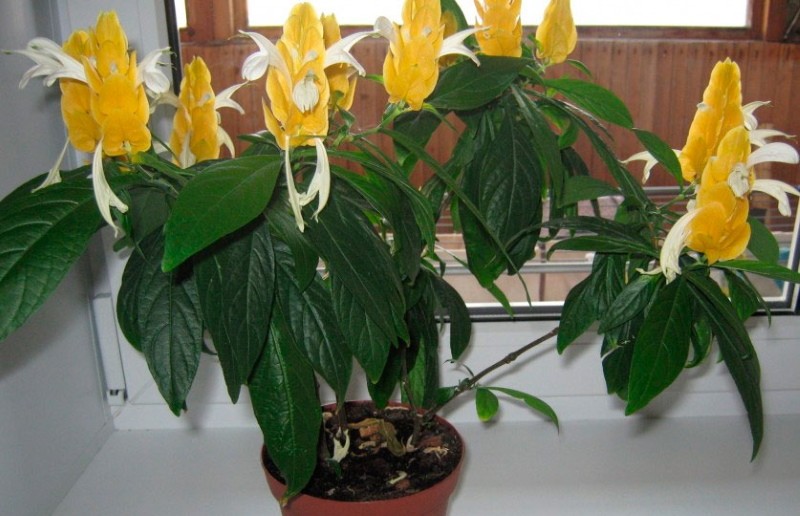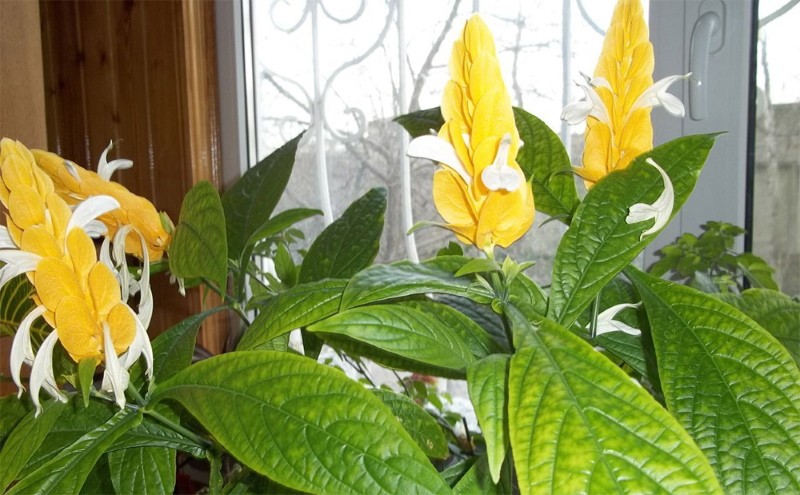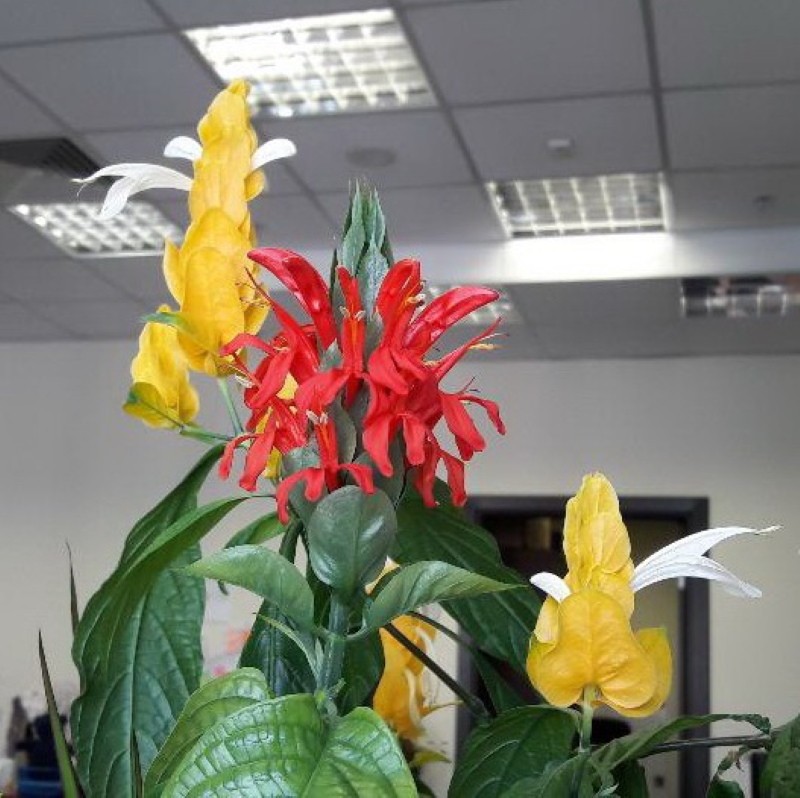Flower with candles pachistachis - care at home for a thermophilic exotic
 Yellow or red inflorescences spike like candles and adorn windowsills from mid-spring to October. Pachistachis blooms so beautifully and for a long time, which should be properly cared for at home. Only if the flower feels comfortable in the house can it set buds. The appearance of the plant also depends on proper care. Indoor species cannot be left to themselves if you want to get a lush bush, and not a pair of elongated and half bald shoots.
Yellow or red inflorescences spike like candles and adorn windowsills from mid-spring to October. Pachistachis blooms so beautifully and for a long time, which should be properly cared for at home. Only if the flower feels comfortable in the house can it set buds. The appearance of the plant also depends on proper care. Indoor species cannot be left to themselves if you want to get a lush bush, and not a pair of elongated and half bald shoots.
What does pachistachis look like?

Due to the dense arrangement of leaves on the branches, the bush seems more luxuriant. The leaf plates are beautiful, oval, with a pointed tip curving downward. Veins are clearly visible over the entire surface of the leaf, giving it a slightly wrinkled shape. The leaves are painted dark green. In mid-February, pachistachis releases original inflorescences in the form of spikelets up to 10 cm long. As they unfold, yellow (or red) flowers appear. But in fact, these are bracts, while white tubular flowers appear later. They live no more than a couple of days, but the bracts are pleasing to the eye for a long time. The flowering of the bush lasts about six months, depending on the species, from mid-winter or late spring - until mid-autumn.
At home, only two types of pachystachis are grown - yellow and red. But most often it is the yellow variety that is planted, because it is more compact. Red pachistachis, due to its large dimensions (height 2 m), is found mainly in greenhouses or winter gardens.
Pachistachis - home care
 Given the thermophilicity and special attitude to the sun, the indoor plant should also be provided with a similar microclimate. Place the pot on a warm sunny windowsill, preferably on the east (on the south you will have to shade from direct rays). Do not forget that a tropical flower needs high humidity. And he loves warmth, but does not tolerate drafts. Cool content (not lower than 16 ° C heat) is allowed only during the dormant period, which occurs in the bush after the end of flowering.
Given the thermophilicity and special attitude to the sun, the indoor plant should also be provided with a similar microclimate. Place the pot on a warm sunny windowsill, preferably on the east (on the south you will have to shade from direct rays). Do not forget that a tropical flower needs high humidity. And he loves warmth, but does not tolerate drafts. Cool content (not lower than 16 ° C heat) is allowed only during the dormant period, which occurs in the bush after the end of flowering.
If you take care of comfortable conditions, then in the future you will only have to look at the pachistachis in a timely manner in order to:
- water regularly and abundantly (the soil must not be allowed to dry out, otherwise the bush will throw off the leaves);
- often spray or place a jar of water next to it;
- feed twice a month mineral complex for flowering plants (from spring to autumn);
- replant young bushes every year, and old ones every three years;
- after the end of flowering, cut off the aboveground part, leaving hemp no more than 12 cm high;
- for the winter, transfer the flower to a cool room so that it can rest and lay flower buds;
- in spring, before the peduncles appear, regularly pinch the tops so that the plant begins to bush.
Pachystachis propagates at home mainly by rooting cuttings left after pruning.